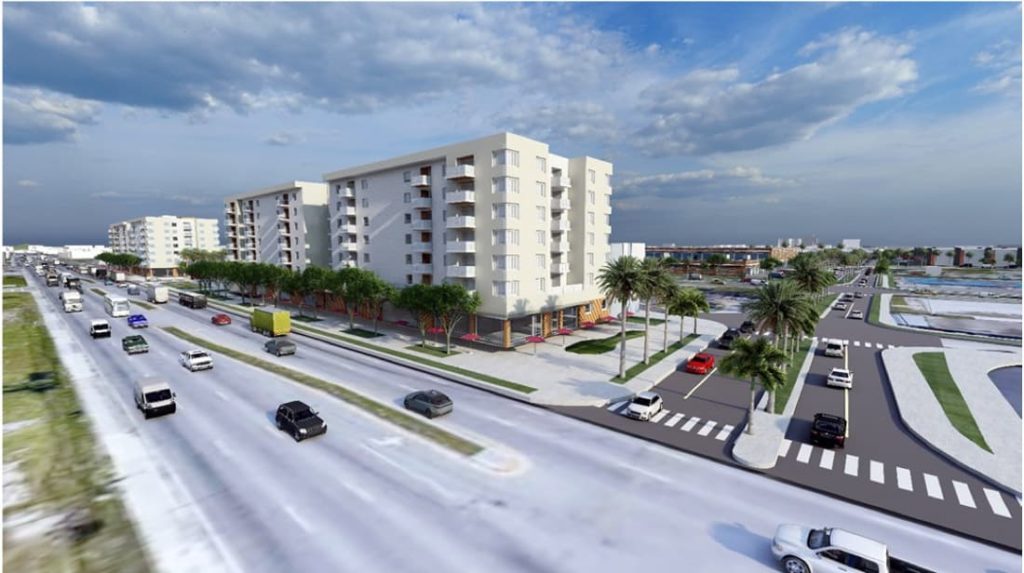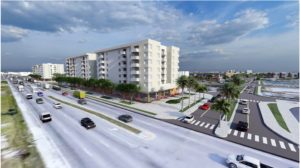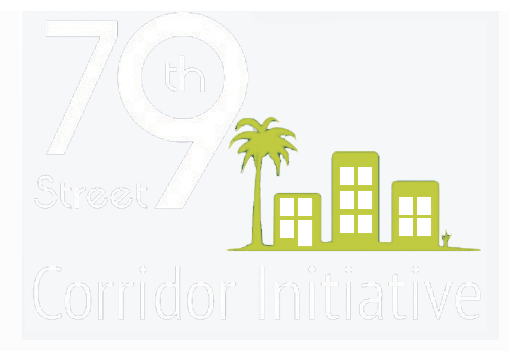Transforming
the Corridor
Introduction
The 79th Street Corridor is a fragmented set of residential, commercial, and industrial sites with a reputation for being dangerous and undesirable, that is ripe for conversion into a cohesive neighborhood due to its many existing transportation and community assets. This document will discuss the ongoing efforts to improve the 79th Street Corridor area.
The 79th Street Initiative’s Revitalization Strategy
The Initiative developed a three-phase approach to transforming the 79th Street corridor area.
Phase I: Master Land Use Plan Development
The Initiative was originally formed to lead a planning process that would enable the 79th Street community to take full advantage of the corridor’s transportation assets. It was originally intended to be a model of sustainability, with an integrated approach to neighborhood development that is responsive to the need for job creation and to the environmental concerns. With funding from several foundations and Miami-Dade County, an area master land use plan was completed by Zyscovich Architects, a well-known local architectural firm in 2003. The plan described the potential for transforming the 79th Street corridor area into a more livable, vibrant community.
The Master Land Use Plan identified the physical details of how the neighborhood is connected (the relationship of land uses, zoning, buildings, blocks, streets, parks, civic and commercial structures) and helped determine how well the social and economic aspects work. However, the Plan did not fully address in detail the zoning and infrastructure needs to implement the Plan.
Phase II: Building a Community Vision
Over the years, numerous community meetings have helped shape a vision for the 79th Street corridor area. The community’s vision is that the 79th Street corridor will be transformed into an area with more green space, shops and recreation. There will be good social and economic infrastructure. The revitalized community will be self-contained with amenities residents need and want. The real estate environment will include mixed use and mixed income development that is pedestrian friendly, with warehouse and manufacturing facilities that have been improved to enhance the industrial character of the area.
Phase III: Program/Project Development and Implementation
The 79th Street Initiative’s economic revitalization plan is designed to uplift the Corridor area by creating a sense of community, a vision for change that is inclusive, and an environment that is attractive to business activity and the community at large. To achieve this vision, the 79th Street Initiative actively participated in the establishment of a Community Redevelopment Agency (CRA) in the 79th Street area to create a tool for financing development activity. At the same time, the Initiative actively participated in the County’s efforts to rezone the 79th Street area to facilitate more pedestrian friendly, scaled development activity that would make the community attractive and economically vital. Also the 79th Street Initiative created a foreign trade zone in the CRA district to link the 79th Street community to the international trade industry.
Phase I: Master Land Use Plan Development
The Initiative was originally formed to lead a planning process that would enable the 79th Street community to take full advantage of the corridor’s transportation assets. It was originally intended to be a model of sustainability, with an integrated approach to neighborhood development that is responsive to the need for job creation and to the environmental concerns. With funding from several foundations and Miami-Dade County, an area master land use plan was completed by Zyscovich Architects, a well-known local architectural firm in 2003. The plan described the potential for transforming the 79th Street corridor area into a more livable, vibrant community.
The Master Land Use Plan identified the physical details of how the neighborhood is connected (the relationship of land uses, zoning, buildings, blocks, streets, parks, civic and commercial structures) and helped determine how well the social and economic aspects work. However, the Plan did not fully address in detail the zoning and infrastructure needs to implement the Plan.

Phase II: Building a Community Vision
Over the years, numerous community meetings have helped shape a vision for the 79th Street corridor area. The community’s vision is that the 79th Street corridor will be transformed into an area with more green space, shops and recreation. There will be good social and economic infrastructure. The revitalized community will be self-contained with amenities residents need and want. The real estate environment will include mixed use and mixed income development that is pedestrian friendly, with warehouse and manufacturing facilities that have been improved to enhance the industrial character of the area.

Phase III: Program/Project Development and Implementation
The 79th Street Initiative’s economic revitalization plan is designed to uplift the Corridor area by creating a sense of community, a vision for change that is inclusive, and an environment that is attractive to business activity and the community at large. To achieve this vision, the 79th Street Initiative actively participated in the establishment of a Community Redevelopment Agency (CRA) in the 79th Street area to create a tool for financing development activity. At the same time, the Initiative actively participated in the County’s efforts to rezone the 79th Street area to facilitate more pedestrian friendly, scaled development activity that would make the community attractive and economically vital. Also the 79th Street Initiative created a foreign trade zone in the CRA district to link the 79th Street community to the international trade industry.

The Initiative is led by three local community-based development organizations (the Urban League of Greater Miami, Inc., Neighborhood Housing Services of Sourth Florida, Inc. and DEEDCO). While interested in the entire Corridor the Initiative has focused most of its efforts on its western portion which has an unprecedented opportunity for sustainable development
The Initiative is a planning and advocacy undertaking that will position this community to take full advantage of these transportation assets. This effort will be a model of sustainability, with an integrated approach to neighborhood development that is equally responsive to jobs and to the environment. The project will expand opportunities for individual residents, improve the community’s quality of life, and demonstrate that environmental improvements and economic development can work together to benefit low and moderate income people. The Initiative will build on the considerable assets of the community, including tangible assets such as the skills of residents, public transportation, land available for assembly, undervalued market potential, home ownership, job access, rail freight, and rights-of-way, and intangible assets such as the sense of place, knowledge of the community, and location efficiency process.


 The Initiative is a planning and advocacy undertaking that will position this community to take full advantage of these transportation assets. This effort will be a model of sustainability, with an integrated approach to neighborhood development that is equally responsive to jobs and to the environment. The project will expand opportunities for individual residents, improve the community’s quality of life, and demonstrate that environmental improvements and economic development can work together to benefit low and moderate income people. The Initiative will build on the considerable assets of the community, including tangible assets such as the skills of residents, public transportation, land available for assembly, undervalued market potential, home ownership, job access, rail freight, and rights-of-way, and intangible assets such as the sense of place, knowledge of the community, and location efficiency process.
The Initiative is a planning and advocacy undertaking that will position this community to take full advantage of these transportation assets. This effort will be a model of sustainability, with an integrated approach to neighborhood development that is equally responsive to jobs and to the environment. The project will expand opportunities for individual residents, improve the community’s quality of life, and demonstrate that environmental improvements and economic development can work together to benefit low and moderate income people. The Initiative will build on the considerable assets of the community, including tangible assets such as the skills of residents, public transportation, land available for assembly, undervalued market potential, home ownership, job access, rail freight, and rights-of-way, and intangible assets such as the sense of place, knowledge of the community, and location efficiency process.
The Initiative is led by three local community-based development organizations (the Urban League of Greater Miami, Inc., Neighborhood Housing Services of Sourth Florida, Inc. and DEEDCO). While interested in the entire Corridor the Initiative has focused most of its efforts on its western portion which has an unprecedented opportunity for sustainable development
The Initiative is a planning and advocacy undertaking that will position this community to take full advantage of these transportation assets. This effort will be a model of sustainability, with an integrated approach to neighborhood development that is equally responsive to jobs and to the environment. The project will expand opportunities for individual residents, improve the community’s quality of life, and demonstrate that environmental improvements and economic development can work together to benefit low and moderate income people. The Initiative will build on the considerable assets of the community, including tangible assets such as the skills of residents, public transportation, land available for assembly, undervalued market potential, home ownership, job access, rail freight, and rights-of-way, and intangible assets such as the sense of place, knowledge of the community, and location efficiency process.





